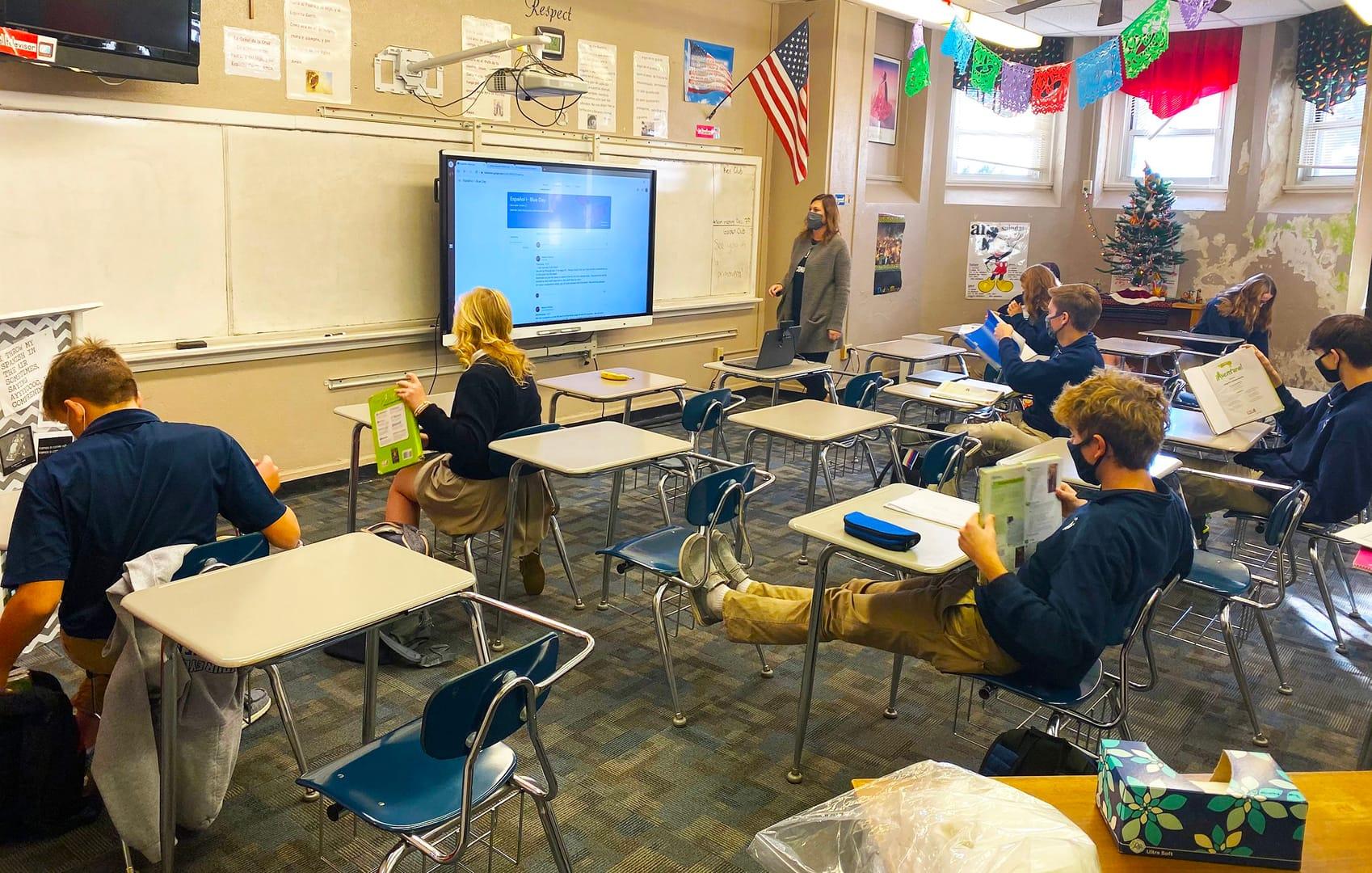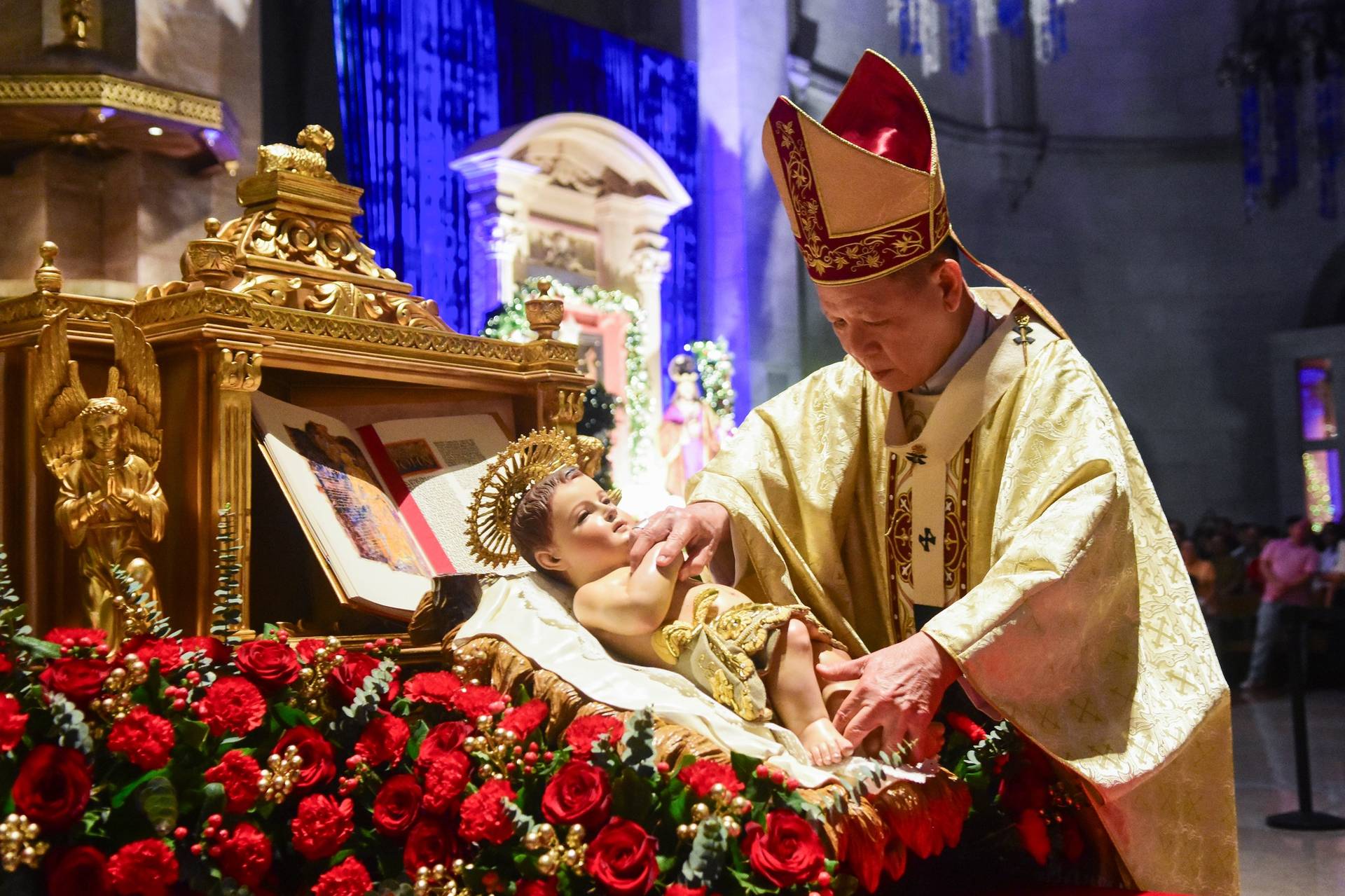SALINA, Kansas — The coronavirus pandemic has required many people around the world to develop an “adapt and carry on” attitude.
That’s the mantra of Geoff Andrews, superintendent of Catholic Schools for the Diocese of Salina, Kansas, as the 15 Catholic schools in the jurisdiction have continued to operate during the pandemic.
“The hard part is staying current with what’s going on in each community,” Andrews said. “The data changes every day. Guidelines change every day. The only thing we’ve learned is the only constant is change.”
With 15 schools sprinkled across the diocese, many opened with in-person learning five days a week in late August.
“The challenge for a large, rural diocese is that there is not a one-size-fits-all approach that works for all of our schools as a whole,” Andrews said. “We’ve been able to manage change and adapt to what will fit each building because every community is extremely different.”
St. John’s Catholic School in Hanover has 96 students in grades 1-8 An early adjustment the school made was to start at 8:20 a.m. instead of 8 a.m. since the bus schedule had shifted.
“This gives us a little bit of built-in COVID time,” said the school’s principal, Amanda Cook. “That gave us the benefit of, hopefully, not having to go remote learning if we had to take a day or two off.”
The planning paid off when school officials decided to extend Thanksgiving break a few days.
“We gave kids an extra four days off,” she said. “We thought it would be the most likely days to exhibit symptoms from COVID,” Cook said.
The school also adapted a modified quarantine for several classes when some students tested positive for COVID-19. The county mandated those students remain home in quarantine but permitted a modified quarantine for the rest of their class, so the school set up the gymnasium for the students and teacher who were in the modified quarantine.
“We were able to put tables up and each child had a table. We knew if they stayed at their table, they were 6 feet apart,” Cook said. “There was a designated entrance into the gym for those students. The public school worked well with us. They packed to-go lunch containers for our students and left them outside the door. Then the teacher in quarantine would retrieve them.”
This flexibility is one reason Andrews attributes to schools being mostly in-person.
“There has been great collaboration between the Catholic school leaders and their respective school councils, along with the local public school in the communities,” Andrews said. “It is refreshing to see everyone’s end goal the same: Let’s do everything we can to keep our students learning on-site.”
In Manhattan, Kansas, he said the public schools have been in a hybrid model of in-person and virtual since August.
“Manhattan Catholic Schools have been on-site five days a week, with one little hiccup,” Andrews said. “I think it’s a huge success story.”
He said he is inspired by the dedication of administrators and pastors. “One priest went to Home Depot or Amazon to purchase necessary supplies for the kids to be on-site in his school,” Andrews said. “Under his direction, he got PVC pipe and screens. Parishioners came in and helped them build screens for the school. I think it’s really awesome when someone says, ‘We know it’s important for our kids to be on-site, and this is what I can do to help make it happen for our students.'”
In Oakley, a town with about 2,100 residents, St. Joseph’s Catholic School operates preschool through fifth grades.
“We have small classes, so we can easily social-distance,” said Michelle Selzer, principal of the school with a student body of 48.
When the students are in close proximity, such as in the hallways, lunchroom or working in small groups, they mask up.
“The kids are really compliant,” she said. “They want to be in school, they want to be with their friends, so they wear the masks. Not even one student has fought the system.”
In Logan County, almost 250 cases of COVID-19 have been reported this year, including Selzer’s husband. Once he tested positive for the virus, she quarantined at home and worked from her dining room table.
“It was an opportunity to lead by example,” she said. “I showed people I could stay home and work from here. The staff worked together really well and knew I was just a phone call away. It went very smoothly.”
In addition to masks and distance, the most significant difference in the school building is a lack of visitors.
“The parents not coming into the building is sad,” Selzer said. “I would really like them to be back in the building. In the past we’ve always invited family and grandparents to a Thanksgiving meal, but we can’t have them in our building this year.”
An area of growth in the past 12 months has been technology. As a result of COVID-19, the state of Kansas received money from the CARES Act and developed a grant titled SPARK (Strengthening People and Revitalizing Kansas). Money was allotted to each school district to expand technology, making remote learning accessible to all students.
“We’ve jumped headfirst into an increase in technology that we wouldn’t have had the opportunity to do if not for the pandemic,” Andrews said. “We have 6-year-olds who know how to Zoom and submit assignments online. We’ve seen people learn about a new way to communicate.”
At St. John’s Catholic School in Hanover, the principal said that even when the students are in the building, the school still uses Zoom. In years past, the student body would gather on Thursday morning to pray the rosary as a group.
“We’ve moved it all to Zoom,” she said. “The whole school is on Zoom and praying. It’s cool to walk down the hallway and hear every classroom in unison praying the rosary.”
Bonar is editor of The Register, newspaper of the Diocese of Salina.

















